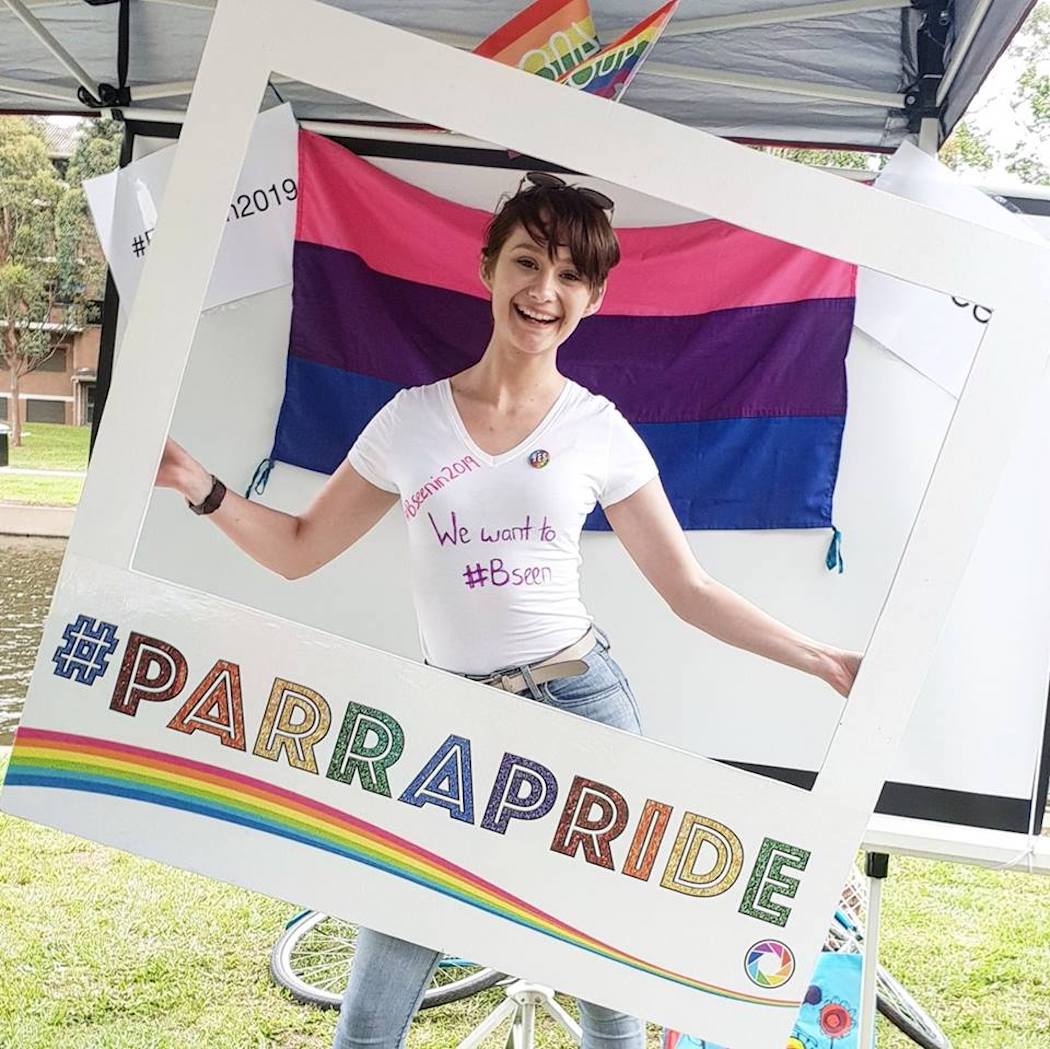Interviewed by Katelynn Bishop
Tell us a bit about yourself.
Where to start? Well, I grew up in the Blue Mountains about two hours out of Sydney, Australia. I am the daughter of a social worker who followed in her footsteps, having studied Social Work straight out of high school.
I have worked in a variety of areas, including working with people with disabilities, people seeking asylum, Indigenous Australians within Alice Springs in rural Australia, the homeless community, and people addicted to substances. I have spent the last three years working with children in out-of-home care, also known as foster and residential care.
However, after the recent success of the projects I have been pursuing with Bi+ Visibility, I have decided to step away from full-time employment and follow in the direction my work with the bi+ community takes me. I plan to return to study in this area and continue to build Bi+ Visibility to further meet the needs of our community.
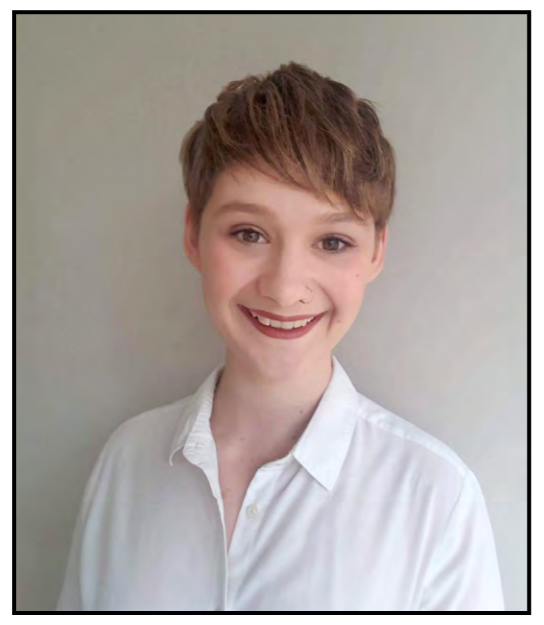
When did you first identify as bisexual?
This is a hard question to answer, as I believe there are many stages in this journey.
The first time I thought about the possibility of being interested in women was during a conversation with a high school friend, probably at around 15, where she was having her first conversations about identifying as a lesbian. I knew at this time there was a part of me, too, that could be interested in women, but knowing I was interested in men made these thoughts confusing and I boxed them away.
A few years later, however, these fleeting thoughts began to linger, and I found it harder and harder to deny their existence. Again, like so many, it took having my first real crush on a member of the same sex to face the reality that in fact, I may not be as straight as I thought.
This was when my internal journey truly began; however, it wasn’t until a few years later that I found myself comfortable enough to be open about my sexuality. The years in the lead up to this time were paved with discomfort, denial, shame, confusion, and at times exclusion.
One of the first people I openly confided in, a close friend who identified as gay, told me that I “don’t get the golden ticket,” suggesting that my bisexuality didn’t count as “coming out.” In the months that followed, any interested I showed in men was met with, “See, I told you you’re straight.” It was a very hard time for me, as it wasn’t until I had my first girlfriend a year later that this friend saw me as “legitimate.” But I would have to say the first time I truly identified as bisexual, proudly and publicly, was during the Australian Same-Sex Marriage Postal Plebiscite.
This was a very hard time for the LGBTIQ+ community in Australia: as in many countries, a vote gave those who preached hatred a platform to yell louder. My mother, sister, and I decided to fight this man’s hate with love, and covered the town square with love-heart cutouts with messages of support for the local LGBTQI+ community. Within days the community joined in and “Trees of Love” sprouted up all over the Blue Mountains. I was proud to stand with my community and fight, and together we won that vote and same-sex marriage has been legal in Australia for over a year.
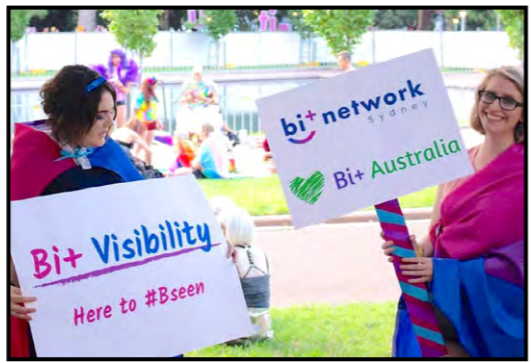
What resources and community support were you able to find when you first identified as bisexual, if any?
I would say this question is the perfect segue in to the work I am doing now with Bi+ Visibility. The answer is: none. It was actually the lack of events in Sydney on Bi Visibility Day last year that pushed me to get involved.
On the day where I was supposed to feel visible, I felt the complete opposite. I was invisible, as was my community. It was this lack of visibility that made me realize something had to be done.
The group you are involved with, Bi+ Visibility, along with the broader Australian bi+ community, has had some exciting milestones and news lately! Tell us about what has been going on.
What a year it has been for the bi+ community in Australia! It truly is 20BiTeen [on social media: 2019 is being referred to as the year of the bisexual -ed].
Since getting involved in this space around October last year, I have seen so much progress all around the country and even the world for our community. Maybe it’s the fact my Facebook newsfeed is now predominately bi+ groups, but it seems that bisexuality is something that is being spoken about more freely. With more celebrities speaking openly about their sexuality and shows such as The Bisexual and The Bi Life popping up, I feel like bisexual visibility is on the rise.
Within Australia, the last two years have seen the establishment of organized bisexual+ networks around the country and, excitingly, our first bi+ specific mental health service, Bi+ Australia.
2019 has also seen the release of the first findings of the largest study of bisexuals in Australia and I believe in the world, conducted by Bi+ Australia’s Managing Director Julia Taylor. Julia’s study, Who I Am, surveyed more than 2500+ bisexual Australians and is filling a knowledge gap that will hopefully enable us to provide up-to-date, accurate information about our community within our advocacy moving forward.
2019 also saw the second national LGBTQI+ conference, Better Together, which brought together voices from every state was well as a number of delegates from the U.S., the U.K., and the Philippines to join in the conversation exploring current issues facing the LGBTQI+ community and how to work together to bring about meaningful social change. The bisexual community was well-represented with the conference with special mention to Sydney Bi+ Network President Amber Loomis and Vice President Eloise Monteiro who ran an inspiring and informative workshop about the bisexual+ community.
In terms of milestones for Bi+ Visibility, I’m not sure where to begin!
Our first true involvement within the advocacy space was through the #Bseen campaign launched October 2018. This was a direct response to the lack of visibility many of us felt on Bi Visibility Day. This campaign was about making bisexual+ people visible not only to society, but also to each other. From the very first day the campaign launched we had people messaging us saying they had never met another bisexual person in their life. This campaign offered those, and many others, a sense of community that so many of us have never experienced.
The second big goal for Bi+ Visibility was in relation to Sydney’s Pride Parade, the Sydney Gay and Lesbian Mardi Gras. As the name suggests, the organization hasn’t always been welcoming to the Bisexual+ community and it had been many years since a bi+ float had participated.
After three months of hard work and dedication from a beautiful team of volunteers from around the country, we marched proudly alongside 80 bisexual+ identifying people dressed as bi+ icons, or “bicons” as we liked to call them, down Sydney’s iconic Oxford Street with the rest of our beautiful LGBTQI+ community. And I had the opportunity to be interviewed live on national TV alongside our float.
Since then, Bi+ Visibility has been working closely with the Sydney Gay and Lesbian Mardi Gras to help make the event and organization more inclusive. The organization is currently undergoing consultation with their members to change the name from Sydney Gay and Lesbian Mardi Gras to something inclusive of the broader LGBTQI+ community.
The third area that we are currently focusing on is raising awareness of the significant mental health issues our community experiences, particularly within the political sphere.
After the success of the #Bseen campaign, Bi+ Visibility, along with bi networks around Australia, were invited to meet with the Australian Greens Senator Janet Rice, a proud bisexual woman, who holds The Greens’ LGBTQI+ Portfolio. Senator Rice is an incredible advocate for the bisexual+ community, having made a powerful speech in parliament on Bi Visibility Day that I would recommend everyone watch.
We communicated to Senator Rice the need for the policy to separate the “B” from the “LGBTQI+” in order to address our unique needs.
We spoke about the current mental health concerns facing our community, including Julia Taylor’s Who I Am study that found that one in three bisexual+ people have attempted suicide. We advocated for the need for policies directed at the bisexual+ community to address these frightening statistics and create real change.
Since that time, The Australian Greens have shared their LGBTQI+ Campaign Commitments, which include $70 million in grants for community organizations with $3 million dedicated specifically to bi+ mental health programs and services!
Their commitments also include funding for bi+ specific research, bi+ peer support programs, raising awareness of biphobia, and improving bi+ access to family and intimate partner violence services.
We were also very excited to have Janet Rice march along side the Bi+ Mardi Gras float!
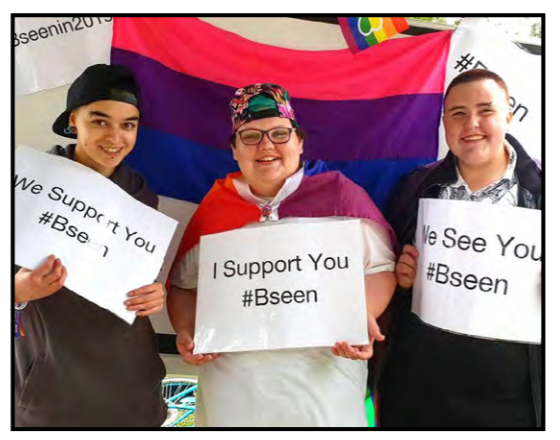
“Visibility” is part of the name of your organization, and the #Bseen campaign emphasizes visibility. Can you share with us your thoughts on the importance of visibility? How do you promote bi+ visibility?
To me, visibility is core to everything we are working towards for our community. When we look at these mental health statistics, the research shows that one of the biggest contribution factors is isolation felt by our community. Not only have I felt this on a personal level, I have heard first hand from many the toll that isolation and exclusion can take.
When we first began the #Bseen campaign, we received a message from a man that stated, “Had I not seen this, I would have ended my life.” That was the first day of the campaign, and from that moment on I have wanted to do everything I Can to show our community they are seen, valued, and celebrated.
Visibility is also incredibly important to fight the stereotypes, stigma, and biphobia that many bisexual+ people experience. Often these attitudes are based on ignorance and lack of understanding. By increasing visibility, and by putting a face, many faces, to our community and speaking out against these views together, we can challenge those notions.
I have also co-founded an events organization, BiCONIC, with my close friend, LGBTQI+ advocate and ultimate ally, Diego Garcia Luna, which hosts events at local pubs and clubs for bi+ people, queer folk, and their allies. I feel these events not only offer the community a safe space to “party,” but also increase visibility and hopefully in term help normalize bisexuality within the wider community.
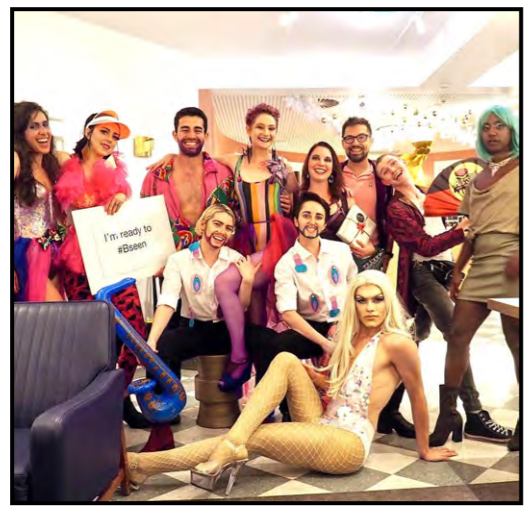
What is your vision for the bisexual+ community in Australia? What challenges do you face, and what do you look forward to?
I envision a strong sense of community for every bisexual+ person around the nation. I want there to be enough platforms — including local community groups, networks, parties, social media, and media representation — that bisexual+ people no longer feel the isolation that research shows so many of us feel. I would also like to see funding reaching bisexual+ specific organizations, such as Bi+ Australia, which has the specialized knowledge and skills to address our needs. Currently there are some great publicly funded LGBTQI+ services, but we need more funding for services that are by and for the bi+ community to meet our unique needs, including mental health concerns.
I believe one of the main challenges we currently face is the discrimination and biphobia that many bisexual+ communities around the world experience. As a community, we often experience discrimination from both the straight community and members of the LGBTQI+ community, as well. The recent Sydney Gay and Lesbian Mardi Gras name change consultation has demonstrated this recently, with members of the wider community stating that bisexual people don’t belong in the parade, amongst other more hurtful things that aren’t worth repeating.
This will be an ongoing challenge; however, as our community grows, I feel these voices will be overshadowed.
Moving forward, I am incredibly excited to see more groundbreaking studies like Julia Taylor’s Who I Am study. But overall, I am most excited to see the love, support, and sense of community that is growing and continues to grow. I truly believe it is our time and look forward to seeing what the years to come will bring.
What do you want readers to know about bi+ activism in Australia?
So many of the incredible bisexual+ advocates here in Australia — Ruby Mountford and Anthony Lekkas (Melbourne Bisexaul Network), Amber Loomis and Elouise Monteiro (Sydney Bi+ Network), and Misty Farquhar (Bisexual Community Perth) — all started off as individuals who were frustrated with the current state of things and decided to do something.
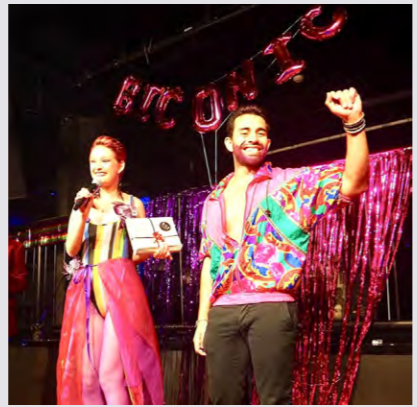
There are so many ways to support your local community that anyone can do within their town or city. Starting a closed Facebook group is a really great way to start. This offers bisexual+ locals a safe space to speak openly about their sexuality, meet others, and find support. The Bisexual+ Networks around Australia were founded by dedicated volunteers who want to enact change. Anyone can take this step and I would encourage readers who are interested in pursuing something like this to visit our website at www.biplusaustralia.org and reach out to us — we would be more than willing to offer guidance.
Overall, my message is anyone, anywhere, can take steps to enact change. It is through dedicated volunteers uniting together that we will see lasting change. I encourage everyone to think about what they can do to help support and continue to develop our incredible community!
Katelynn Bishop has a Ph.D. in Sociology with an emphasis in Feminist Studies. She currently teachers sociology and pursues social justice in Northern California, where she lives with her partner and cat. She is assistant editor of Bi Women Quarterly.

